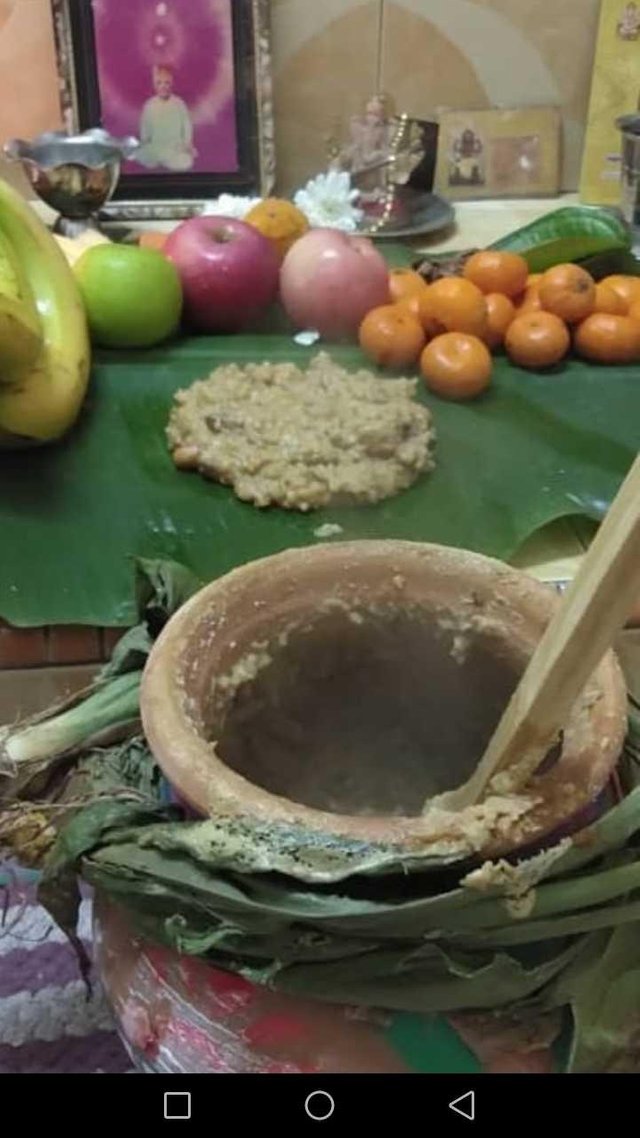About Hindu Pongal Festival
Pongal festival
Pongal is a four-days-long harvest festival celebrated in Tamil Nadu, a southern state of India. For as long as people have been planting and gathering food, there has been some form of harvest festival. Pongal, one of the most important popular Hindu festivals of the year. This four-day festival of thanksgiving to nature takes its name from the Tamil word meaning "to boil" and is held in the month of Thai (January-February) during the season when rice and other cereals, sugar-cane, and turmeric (an essential ingredient in Tamil cooking) are harvested.Mid-January is an important time in the Tamil calendar. The harvest festival, Pongal, falls typically on the 14th or the 15th of January and is the quintessential 'Tamil Festival'. Pongal is a harvest festival, a traditional occasion for giving thanks to nature, for celebrating the life cycles that give us grain. Tamilians say 'Thai pirandhaal vazhi pirakkum', and believe that knotty family problems will be solved with the advent of the Tamil month Thai that begins on Pongal day. This is traditionally the month of weddings. This is not a surprise in a largely agricultural community - the riches gained from a good harvest form the economic basis for expensive family occasions like weddings.

The First Day
This first day is celebrated as Bhogi festival in honor of Lord Indra, the supreme ruler of clouds that give rains. Homage is paid to Lord Indra for the abundance of harvest, thereby bringing plenty and prosperity to the land. Another ritual observed on this day is Bhogi Mantalu, when useless household articles are thrown into a fire made of wood and cow-dung cakes. Girls dance around the bonfire, singing songs in praise of the gods, the spring and the harvest. The significance of the bonfire, in which is burnt the agricultural wastes and firewood is to keep warm during the last lap of winter.

The Second Day
On the second day of Pongal, the puja or act of ceremonial worship is performed when rice is boiled in milk outdoors in a earthenware pot and is then symbolically offered to the sun-god along with other oblations. All people wear traditional dress and markings, and their is an interesting ritual where husband and wife dispose off elegant ritual utensils specially used for the puja. In the village, the Pongal ceremony is carried out more simply but with the same devotion. In accordance with the appointed ritual a turmeric plant is tied around the pot in which the rice will be boiled. The offerings include the two sticks of sugar-cane in background and coconut and bananas in the dish. A common feature of the puja, in addition to the offerings, is the kolam, the auspicious design which is traditionally traced in white lime powder before the house in the early morning after bathing.

The Third Day
The third day is known as Mattu Pongal, the day of Pongal for cows. Multi-colored beads, tinkling bells, sheaves of corn and flower garlands are tied around the neck of the cattle and then are worshiped. They are fed with Pongal and taken to the village centers. The resounding of their bells attract the villagers as the young men race each other's cattle. The entire atmosphere becomes festive and full of fun and revelry. Arati is performed on them, so as to ward off the evil eye. According to a legend, once Shiva asked his bull, Basava, to go to the earth and ask the mortals to have an oil massage and bath every day and to eat once a month. Inadvertently, Basava announced that everyone should eat daily and have an oil bath once a month. This mistake enraged Shiva who then cursed Basava, banishing him to live on the earth forever. He would have to plough the fields and help people produce more food. Thus the association of this day with cattle. 
The Fourth Day
The Fourth day is known as Knau or Kannum Pongal day. On this day, a turmeric leaf is washed and is then placed on the ground. On this leaf are placed, the left overs of sweet Pongal and Venn Pongal, ordinary rice as well as rice colored red and yellow, betel leaves, betel nuts, two pieces of sugarcane, turmeric leaves, and plantains. In Tamil Nadu women perform this ritual before bathing in the morning. All the women, young and old, of the house assemble in the courtyard. The rice is placed in the centre of the leaf, while the women ask that the house and family of their brothers should prosper. Arati is performed for the brothers with turmeric water, limestone and rice, and this water is sprinkled on the kolam in front of the house. 
How make pongal?
Ingredients
» 1 cup Rice
» 1/4 cup Moong dal
» /2- 1 tsp jeera
» 1/2-1 tsp peppercorns
» 1/2 tsp pepper powdered fresh
» A few Cashewnuts broken
» 1/2 cup dessicated Coconut
» A pinch of Turmeric powder
» Ghee
Method
- Fry the Moongdal a little till you get a light flavour.
- Mix the dal with the rice, add 2 -3 cups of water (the rice should cook very very soft)
- Add turmeric powder, coconut, a few peppercorns and a 1-2 tsp of ghee to the rice and pressure cook till done.
- When done, take a kadai add sufficient of Ghee to it, more the ghee better it tastes, add jeera, pepper corns and cashewnuts.
- Add the cooked rice mixture, add pepper powder, salt and mix well with the ghee and jeera/cashewnuts.
The pongal is ready!!! you can add some more ghee at the end if you need. It is best eaten fresh and Hot!!,
Hi! I am a robot. I just upvoted you! I found similar content that readers might be interested in:
https://groups.google.com/d/msg/venkatmails/a3xXMDcKWBw/yHfpLw82EQAJ
Sorry i never copy its my own word but i read by other website ...